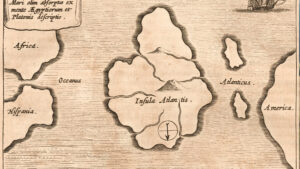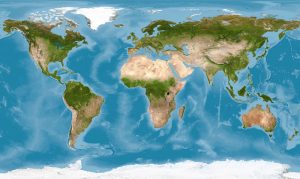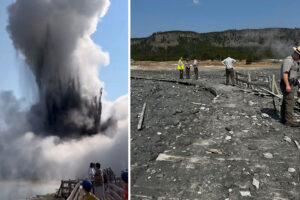The geographical center of a place refers to the midpoint between three or more points on Earth. The main competitors for the honor of being the Center of Asia are Kyzyl, the capital of Tuva (a republic within Russia), and Ürümqi in China.

Map of Russia, with Tuva in red and Mongolia just south of it. Illustration: Wikipedia
Unfortunately, the methods of determining a geographical center are not necessarily accurate. Many variables are at play. Some researchers include bodies of water or islands. Others don’t. Often, one geographer disputes another’s conclusion. That’s the case with the center of Asia.
History
Kyzyl is approximately 4,700km away from Moscow, near the Mongolian border. There isn’t much tourism here nowadays, since Russia’s invasion of Ukraine. Even before that, there wasn’t much. Most tourists seeking a Mongolian experience go to the country of Mongolia itself rather than to this Russian enclave of Mongolian culture.

Mongolian culture, including Mongolian-style wrestling at the annual Naadam festival, remains prevalent in Kyzyl. Photo: Jerry Kobalenko
Historically, the area initially belonged to China and then Mongolia. In the 19th century, the Qing Dynasty government gave Russians permission to settle there. However, this small-scale settlement scheme turned into full-blown colonization, followed by a separatist movement encouraged by the Tsarist monarchy. Eventually, Tuva gained a sort of independence for a short time before the Soviet Union enveloped it. In the West, it was known mainly by philatelists for its exotic postage stamps. Currently, it is a relatively forgotten part of the Russian Federation.

The original center of Asia obelisk, replaced today by a grander version, shown in the featured image. Photo: Jerry Kobalenko
Geographical research
The story of how Kyzyl came to be the center of Asia varies. An engineer named Vsevolod Rodichev said in the 1900s that an Englishman on a mission to find the centers of all the continents determined that Kyzyl was the heart of Asia. He duly erected a monument on the property of Georgy Safyanov, an official with the Imperial Russian Geography Society. Many people thought the story was bogus, but this did not stop the Soviets from commissioning an obelisk in its honor on the banks of the Yenisey River.
In 2014, the Russians created a larger, more opulent monument in the same location to reflect Tuva’s Buddhist ties. Ancient Scythian imagery also shows Chinese, Mongolian, and Russian influence.

Google Earth map of the geographical center in Asia. Photo: Far West China
Another story states that a man named Proctor placed the first monument in Kyzyl. Whether or not he was this mysterious Englishman is unclear. Supposedly, a man called Masahiko Todoriki visited the location and interviewed locals for answers. He mainly received a mixture of shrugs and dismissals. One person claimed to remember the man as an English teacher. However, the trail goes cold from there.
Rivalry with China
Russia’s declaration that it held the center of Asia did not sit well with the Chinese. Their own calculations put the geographical center 700km from Kyzyl — not coincidentally, within Chinese territory. Their method took the geographical centers of 49 countries in Asia and found that the midway point lay in Yongfeng, near the city of Ürümqi in Xinjiang.
However, these Asian countries included island states as well. Whether the inclusion was done purposefully to place the midway point in Chinese territory is unknown. The calculations are not easy to verify.
Nevertheless, the Chinese built an elaborate monument to commemorate their finding. They even decided to relocate a whole village in order to build up the spot. It includes a large gate resembling wings and an 18m high tower with four posts forming an “A” for Asia and a globe at its summit.

China’s competing center of Asia monument. Photo: songyimao/Panoramio
Conclusion
The debate remains ongoing. No one has legitimized either claim. However, the answer lies in the methodology. How do you accurately find the geographical center of a place, let alone a continent? Some tried to find the centroid, or geometric center. Others proposed finding it by longitude and latitude. Still others, by using an area’s volume: In other words, giving mountains extra “weight” compared to flat land.
The United States Geological Survey states that there is no precise way of calculating these things and “no accepted definition” of a geographical center.






